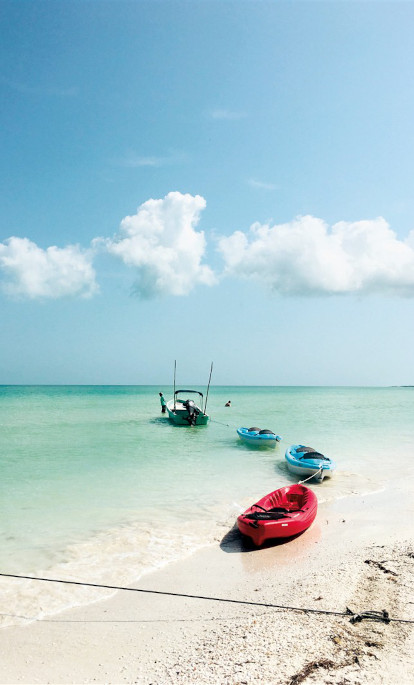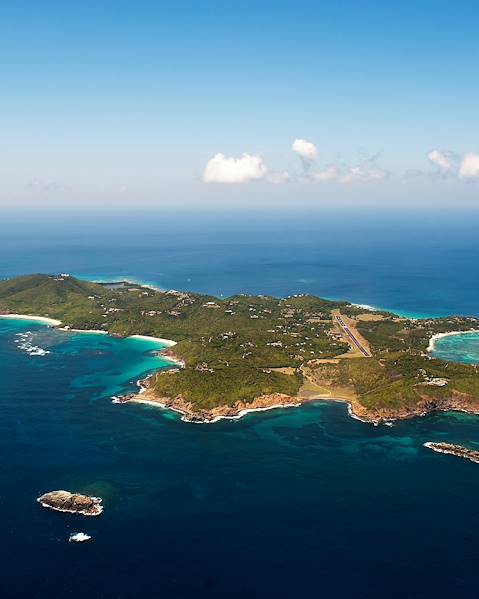Saint Vincent and the Grenadines are known as the playground for the rich and famous, but you don’t need all the glitz and glam to make the most of this angelic Caribbean archipelago. White sand beaches, unbelievably blue waters and taste-bud tingling cuisine are just a few of the things you can look forward to, with impressive dive sites, guided island tours and of course, rum punch, in between. Climb volcanoes, ride horses or just lie back in a hammock under swaying palms. Take a look at our guide of things to know before travelling to Saint Vincent and the Grenadines so that you can make the most of this Caribbean island chain…
Climate and Weather in Saint Vincent & the Grenadines
Saint Vincent and the Grenadines' weather is what you would expect from a group of tropical islands found slap bang in the middle of the toasty Caribbean. It boasts balmy temperatures that flirt with the 30s for most of the year with June to December facing the hottest days as well as the rainiest, followed by a short cool season (temperatures only dip to the mid-20s so don’t fret) from January to April. Northeast trade winds blow steadily and with moderate force throughout the hot season. The centre of Kingstown, on the main island, is hilly and tropical. It is home to an equatorial climate where rain falls frequently and the temperature is often a little lower. The islands that make up the rest of the Grenadines archipelago, often face rain, but downpours and thunderstorms are usually short but intense, so won’t leave you without sunshine for too long. The sea is warm enough for swimming throughout the year.
Food and Drink in Saint Vincent & the Grenadines
The breadfruit is the unofficial foodie symbol of Saint Vincent and makes up part of the national dish, roasted breadfruit and fried jackfish. If you are exploring the archipelago in August, make sure you venture to the Breadfruit Festival where you will be able to try all kinds of variations and tuck in to your heart’s content. Most Caribbean islands rely on fresh produce as a staple within their diet, and Saint Vincent and the Grenadines is no different. Fresh fruit, homegrown vegetables and locally caught fish are the mainstay of the Vincentian diet, with fish including red snapper, kingfish and lambi (queen conch). Curries packed with vibrant spices and local goat and chicken is also popular. All of this good grub is washed down with a delicious local beer or a rum punch or two.
Language in Saint Vincent & the Grenadines
English is the official language of Saint Vincent and the Grenadines. Most locals also speak Vincentian Creole, but English is spoken by most businesses and establishments.
Health and Safety in Saint Vincent & the Grenadines
Saint Vincent and the Grenadines has been categorised as having a risk of Zika virus transmission which is transmitted by mosquitos during daylight hours and is common in towns and cities. Using mosquito repellents is recommended. Cases of Chikungunya virus and Dengue virus have also been confirmed, so taking steps to avoid being bitten by mosquitoes is highly recommended.
It is recommended that tourists take great care when swimming in the ocean as currents can be deceptively strong and not all beaches have lifeguards or warning flags. Crime levels are low in Saint Vincent and the Grenadines, but taking the usual sensible precautions is recommended, including locking doors and windows at night, avoiding isolated areas and beaches after dark, and leaving valuables and travel documents in a safe. This also applies when staying on a yacht. It is recommended that tourists only use licensed taxis and take particular care at night.
Things to do in Saint Vincent & the Grenadines
Water-based activities dominate in Saint Vincent and the Grenadines. Whether that is kayaking around the archipelago, exploring the pristine aquamarine sea or reclining for a languid lunch or two under a swaying palm on a golden expanse of sand, these islands are brimming with things to do. Explore the island with a guide, driving past artists’ studios, hillsides dotted with sheep and goats, and the tips of beautiful bays and coves. Don a snorkel or dive mask and explore the western side of the islands where you will come across colourful reefs as well as being able to enjoy rift, cave, wall and wreck dives.
Transport in Saint Vincent & the Grenadines
Cars drive on the same side as the UK, on the left, but you will need a local temporary driving license to hire a car which can be obtained at any car rental agency on the island. You must present a valid UK driving licence. Take care when driving at night as some roads are unlit. Many roads are riddled with potholes and blind corners, and indicators are not always used. Don’t stop if you get flagged down by pedestrians and keep car doors locked when driving. Public transport is available and cheaper than taxis, but minibus drivers may exceed the speed limit. Taxis aren’t metered, so make sure to agree the fare in local currency with the driver before you set off.
Additional Information
- Medical treatment can be expensive so make sure you have adequate travel insurance and accessible funds to cover any costs.
- The drinking age is 16 years old.
- The Eastern Caribbean dollar is the main currency, but the US dollar is widely accepted.














